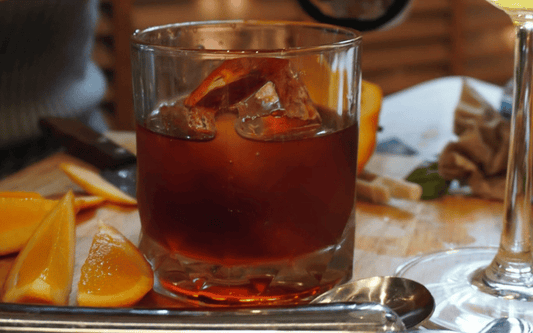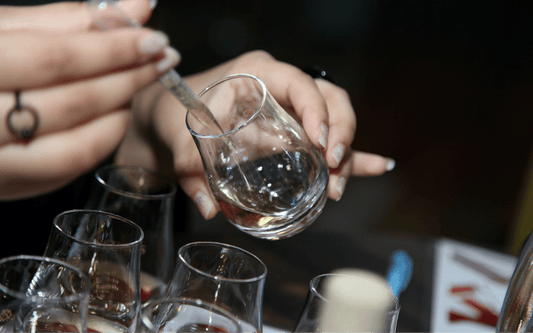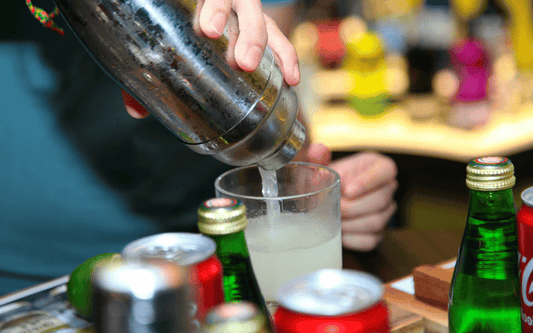COGNAC

Cognac, often referred to as the "King of Brandy," has a long and distinguished history that dates back to the 16th century. Originating in the Cognac region of France, this renowned spirit is made from white wine grapes, predominantly the Ugni Blanc variety. The name "Cognac" is protected under French law and can only be used for brandy produced in the designated Cognac region using specific methods. Over the centuries, Cognac has become synonymous with luxury, craftsmanship, and tradition.
The Process of Making Cognac
The production of Cognac is a meticulous and time-honored process involving several key steps:
-
Harvesting: The process begins with the harvesting of grapes in the Cognac region, typically between September and October. Ugni Blanc grapes are the primary variety used due to their high acidity and low alcohol content, which are ideal for distillation.
-
Fermentation: The grapes are pressed to extract the juice, which is then fermented for about two to three weeks. During fermentation, natural yeast converts the sugars in the grape juice into alcohol, producing a low-alcohol white wine.
-
Distillation: The fermented wine is distilled twice in copper pot stills known as "alambic charentais." The first distillation produces a liquid called "brouillis," which is then distilled a second time to produce the "eau-de-vie" (water of life), a clear spirit with an alcohol content of about 70%.
-
Aging: The eau-de-vie is aged in French oak barrels, primarily from the Limousin or Tronçais forests. The aging process imparts flavor, color, and complexity to the spirit. By law, Cognac must be aged for at least two years, but many Cognacs are aged much longer to achieve greater depth and richness.
-
Blending: After aging, the eau-de-vie is blended by a master blender to create a consistent and balanced final product. Blending different ages and vineyard origins is a crucial part of the Cognac-making process, allowing producers to achieve their signature house styles.
-
Bottling: Once blended, the Cognac is diluted with distilled water to reach the desired alcohol content, typically around 40%, and then bottled for sale.
Categories of Cognac and How They Are Produced
Cognac is categorized based on its age, which is determined by the youngest eau-de-vie in the blend:
-
VS (Very Special): Aged for a minimum of two years in oak barrels. VS Cognac is often used in cocktails due to its youthful and vibrant character.
-
VSOP (Very Superior Old Pale): Aged for a minimum of four years. VSOP Cognac has a more mature flavor profile, with richer and more complex notes compared to VS.
-
XO (Extra Old): Aged for a minimum of ten years (as of 2018; previously six years). XO Cognac is known for its deep, intricate flavors and luxurious mouthfeel, making it ideal for sipping.
-
Napoleon: Similar to XO, Napoleon Cognac is aged for at least ten years, but it often sits between VSOP and XO in terms of flavor complexity.
-
Hors d'Âge (Beyond Age): This category denotes Cognac aged well beyond the minimum requirements for XO, often for decades. Hors d'Âge Cognacs are rare, highly sought after, and typically very expensive.
How to Choose Cognac
When selecting Cognac, consider the following factors:
-
Age: Determine the category (VS, VSOP, XO, etc.) that suits your taste preferences and budget. Older Cognacs generally offer more complex flavors but come at a higher price.
-
Brand: Well-known houses like Hennessy, Rémy Martin, Courvoisier, and Martell have established reputations for quality. However, exploring smaller producers can also yield delightful discoveries.
-
Flavor Profile: Pay attention to tasting notes. VS Cognacs are typically lighter and fruitier, while older Cognacs like XO offer richer, more nuanced flavors with notes of dried fruit, spice, and oak.
-
Purpose: Consider whether you plan to sip the Cognac neat or use it in cocktails. Younger Cognacs (VS, VSOP) are versatile for mixing, while older Cognacs are best enjoyed on their own.
Popular Cognac Cocktails
Cognac's versatility makes it an excellent base for a variety of classic and contemporary cocktails:
-
Sidecar: A classic cocktail made with Cognac, Cointreau, and lemon juice, served in a sugar-rimmed glass. The Sidecar is a perfect balance of sweet and sour flavors.
-
French 75: A sophisticated drink combining Cognac, lemon juice, simple syrup, and Champagne. The French 75 is elegant and effervescent, perfect for celebrations.
-
Vieux Carré: A New Orleans classic featuring Cognac, rye whiskey, sweet vermouth, Bénédictine, and bitters. The Vieux Carré is complex and aromatic, ideal for sipping.
-
Stinger: A simple yet refined cocktail made with Cognac and white crème de menthe. The Stinger is a refreshing after-dinner drink.
-
Cognac Old Fashioned: A twist on the traditional Old Fashioned, using Cognac instead of whiskey, combined with sugar, bitters, and an orange twist.
-
Champagne Cocktail: A festive drink featuring Cognac, a sugar cube soaked in bitters, and topped with Champagne. This cocktail is bubbly and bittersweet, perfect for toasts.
Cognac is a distinguished spirit with a rich history, intricate production process, and diverse range of categories. Whether enjoyed neat, on the rocks, or as the star ingredient in a cocktail, Cognac offers a luxurious and versatile drinking experience. Its timeless appeal and depth of flavor make it a treasured addition to any spirits collection. Cheers to discovering the world of Cognac!




